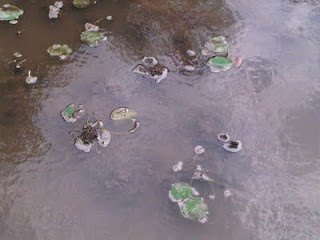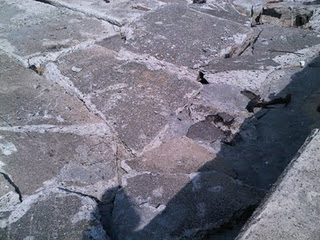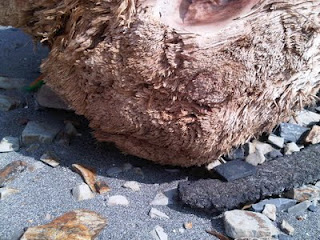Jonet Menu
What is Miyagi-Jonet?
MIYAGI JO-NET (Miyagi Women’s Support Network) is a non-profit organisation supporting women in the Tohoku area that was devastated by the earthquake and tsunami on March 11, 2011. We aim to connect the women in the affected areas with women and supporters from around Japan and the world. To this end, we are cooperating with various other women’s and relief organisations. Our many projects are designed to help women individually in reconstructing their lives and livelihoods. We thereby hope to brighten their everyday a little bit. We also collect relief/support goods and other donations to distribute them among the women and families affected by the disaster. Through regular meetings, our ‘salons,’ and consultations, we gain insight into women’s needs and concerns, and propose adequate measures to local and regional administrations.
Many of Miyagi Jonet’s members are women affected themselves by the disaster.
25 Sept 2011
Tsunami PTSD and the road to recovery
This is about my friend OY from Ishinomaki.
She lost her house, family business and both parents in an instant. She herself was inside a car that was submerged by the tsunami. Miraculously, OY survived. However in the shelter, this single woman who has gone through the most traumatic experiences, has her story ignored.
Since moving to the temporary accommodation, OY has been participating with us in the Jonet salon.
At the Sendai 'Women's Communication Space' event, she told us she wanted to find a job that would enable her to keep on living as a single woman. Through participating in the Jonet salon, OY received encouragement from many people.
She still experiences flashbacks and requires medical treatment for PTSD.
Every time she hears the sound of a building's shutters coming down she remembers the noise her car made while crashing into things under the surging waters of the tsunami.
Before the six months memorial service for those who perished in the disaster, it took her two days to file the death reports for her parents.
The pain of remembering through completing interviews and reports was akin to being cut to pieces.
'I thought I had dealt with my feelings, but my body started shaking, my hand stopped writing, tears welled up and I couldn't stop crying. Putting into writing the details on how my parents went missing in the disaster was more traumatic for me than when I had just imagined it.
I thought I had already accepted my parents' death, but this made me feel the real weight of the tragedy. Even though I may look fine, these are still painful days for me.'
Despite all this, in September OY secured an accounting job which she will begin in October. Her new workplace is only eight minutes walk from her accommodation and this also gives her peace of mind.
For a woman in her forties to find work in a town plagued by unemployment like Ishinomaki is nothing short of a miracle. This success comes as a result of her fight and from the encouragement she received. Thank you everyone for your support.
'If you are alive, good things will certainly come to pass' is how we feel about OY's story. Yahata
Living in temporary housing and then a typhoon
It seems there are problems arising in the temporary housing both with relationships between people, and among parents, children and relatives.
Ms S., who kindly came to the women’s storytelling event, is currently living in the temporary housing at Onagawa.
The other day I posted Purple Hotline flyers and cards, and Great East Japan Earthquake Miyagi counselling hotline cards. I received an e-mail from Ms S. saying “I was really glad to learn about the freephone counselling service. Please pass on my thanks to everyone at Jonet.”
She went on to say that the people at the Onagawa temporary housing had been told to evacuate during Typhoon Roke, but their escape route was flooded, so they all moved to an assembly hall on slightly higher ground. It really pains me that everyone in the disaster area has to put up with so many difficulties.
The temporary housing that was built by cutting into the mountain side is very damp and the futons the residents have received as donations quickly go mouldy. They are worried about allergies and pneumonia. Ms S. thinks it would be nice to have heated carpets as the mornings and evenings are chilly. These are electrical appliances so it’s difficult for Jonet to organise them, but they are urgently needed so people can maintain their health.
I feel bad that I can’t take part in the salon much as I’m so busy with work
But if there’s anything I can do to connect things together I would like to do so. (TO)
Freephone telephone counselling
・0120-941-826(toll-free from anywhere in the country / women only)
24 hours a day/ all year round
Organizers: NPO National Women’s Shelter Net
(Calls from the disaster area have priority, but the lines are quite busy)
・0120-933-887 Great East Japan Earthquake Miyagi counselling hotline (including domestic violence and sexual assault)
Mon to Fri (not including weekends and holidays) 08:30 – 16:45
Freephone from within Miyagi prefecture(this line is not that busy yet)
Organizers: Cabinet Office, Miyagi Prefecture, NPO Hearty Sendai
19 Sept 2011
Reportage No. 7 from Kami-no Ie
The landlady of Kami-no Ie has told me about the recent situation of Tsukihama in Higashi-Matsushima.
First of all, most of the debris has been removed.
A month and half have past since people moved into the new temporary housing, and there are cheerful voices to be heard.
It was only yesterday when 40 student volunteers from Teikyo University came to Tsukihama. Actually, they came to Miyagi prefecture as a group of approximately 200 people, and then they were split into some groups so that they could go to several affected areas.
Tsukihama has a traditional event called “Enzunowari” which is one of nation’s Important Cultural Properties, and there are also a holy grotto and a shrine that enshrines a special god. The grotto was flooded above the ground by the tsunami. And the shrine, though it escaped being flooded, has been damaged by the earthquake.
The student volunteers did the mowing quite elaborately around the grotto and the shrine.
“I gave them all scythes I could find. But those young people today didn’t really know how to use them. Still it was very kind of them to come and do the mowing work. Thankfully, it is all clean around the shrine now. Another group of 30 volunteers will come tomorrow, and we will make curry for them. Since I’ve got a big rice cooker, I shall work hard to welcome those people. You see, we were given food for a long time after the disaster, and now it’s our turn to prepare food for other people. I’m finding it all fun! We had never thought the earthquake and the tsunami could be as devastating as this, but we had never thought that so many people who don’t even know us personally would come to help us either. I do feel that I should be fine because I have been given so much support from many people,” said Ritsuko ever-warmheartedly.
Her husband has been making Tsukihama’s revival plans, and now Mr. S and Mr. K from Media Research are also involved. Illustrations have been inserted into the plan with their assistance, and the plan-design is almost completed.
A fund called “Tourism Revival Project” has been set up by Kami-no Ie. They are now looking for people who wish to contribute to this project. (They can make their contribution in units of 10,000 yen.)
The reward will be either 1) 100 sheets of toasted nori (edible seaweed) or 2) trial fishery experience in Tsukihama, and either one will be rewarded in 2 years time from now on.
I would like to take this opportunity to ask for your aid. Let’s support them!
For more information, please check the “Tourism Revival Project(観光再生プロジェクト)” in their website:
http://www2.ocn.ne.jp/~kaminoie/mousikomi.html
The sea is once again clean.
People have started nori planting in Tsukihama.
An elder friend of the landlady of Kami-no Ie.
12 Sept 2011
“Iriya Welfare Temporary Housing” OPEN
On the 30th August, we received some joyful news from a person, introduced in the “Letters of gratitude” section:
Reopening of homes for the elderly
Starting tomorrow, 13th September (Tuesday), we are accepting applications from up to 18 people. The address is Minamisanriku town, Iriya district, Yamanokamidaira 31-2
In our correspondence so far the person has been writing about how, on the way home from work, their legs led them straight to the shelters. But her voice on the phone today was really excited!
At Jonet we have a lot of bedclothes and covers stacked up, so I’m on my way to take a happy photograph (of the people at the home after donating).
Don’t miss it!
11 Sept 2011
A Mother’s Anguish
 |
| The evacuation centre residents now number only around 100 |
 |
Autumn, the season when the miscanthus grasses
blow.
Once more we prepared powdered green tea.
|
 |
The moving of families
to temporary housing continues.
It is expected that everyone will be moved by
the end of October.
|
 |
| Mid-demolition. The far building is no longer standing. |
 |
As a small child, I
would buy things in this old bookshop on credit using my father’s name.
After the disaster and a
change of location, it looks set to reopen!
|
City of Ishinomaki, Iinogawa district
 |
|
“I’ve been looking for this
all along”, this lady’s voice rang
with excitement as she just
found a lost memento.
|
A meeting with Unilever Japan‘s CEO in Tanigawahama
 |
| Things found in the mud are washed and left to dry in the sun |
 |
| A pond in a temple |
 |
|
We heard from the construction workers that
the cedar trees
turned
red up to their tree tops; they were 25m high.
|
 |
| The one who was working the most was Unilever Japan‘s CEO |
 |
| Children‘s toys found in every place are put aside with great care |
 |
The sight of the women taking part in the
removal of the rubble
gives a strong encouragement
to the disaster victims |
 |
| The driver‘s seat inside a car |
 |
| Suddenly out of nowhere appeared a squashed bra |
 |
| The remains of a house |
 |
|
The remains of a house’s foundations
|
 |
| The wharf is cracked like a jig-saw puzzle |
 |
| The root of a tree washed up on the shore |
 |
| A man being interviewed |
 |
| Unilever style fashion |
8 Sept 2011
Ishinomaki City, Oharahama
7 Sept 2011
2nd Universal Health Day in Yokohama
World Sexual Health Day Yokohama was held on Sept. 4, and a donation box (for Miyagi Jonet) was set up at the reception desk. Today, we received your donations, as well as the handicrafts materials that we had requested in our Jonet blog.
New Book by Psychiatrist Naoko Miyaji
|
Jonet recommends
this book – it’s written in a very easy-to-understand style. Earthquake Trauma and Reconstruction Stress
Iwanami Booklet No. 815 Iwanami Shoten
Price: 500 yen
|



























